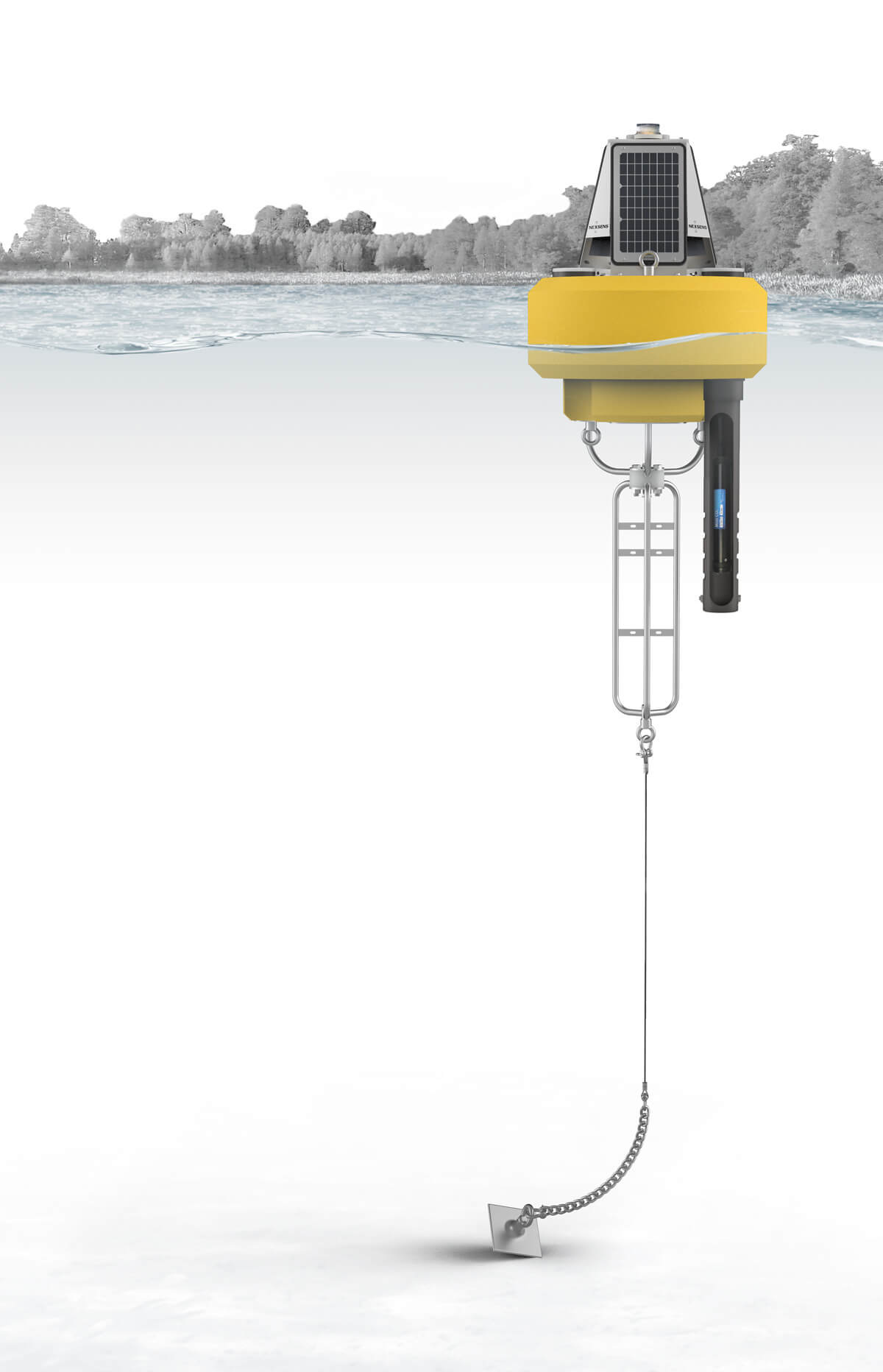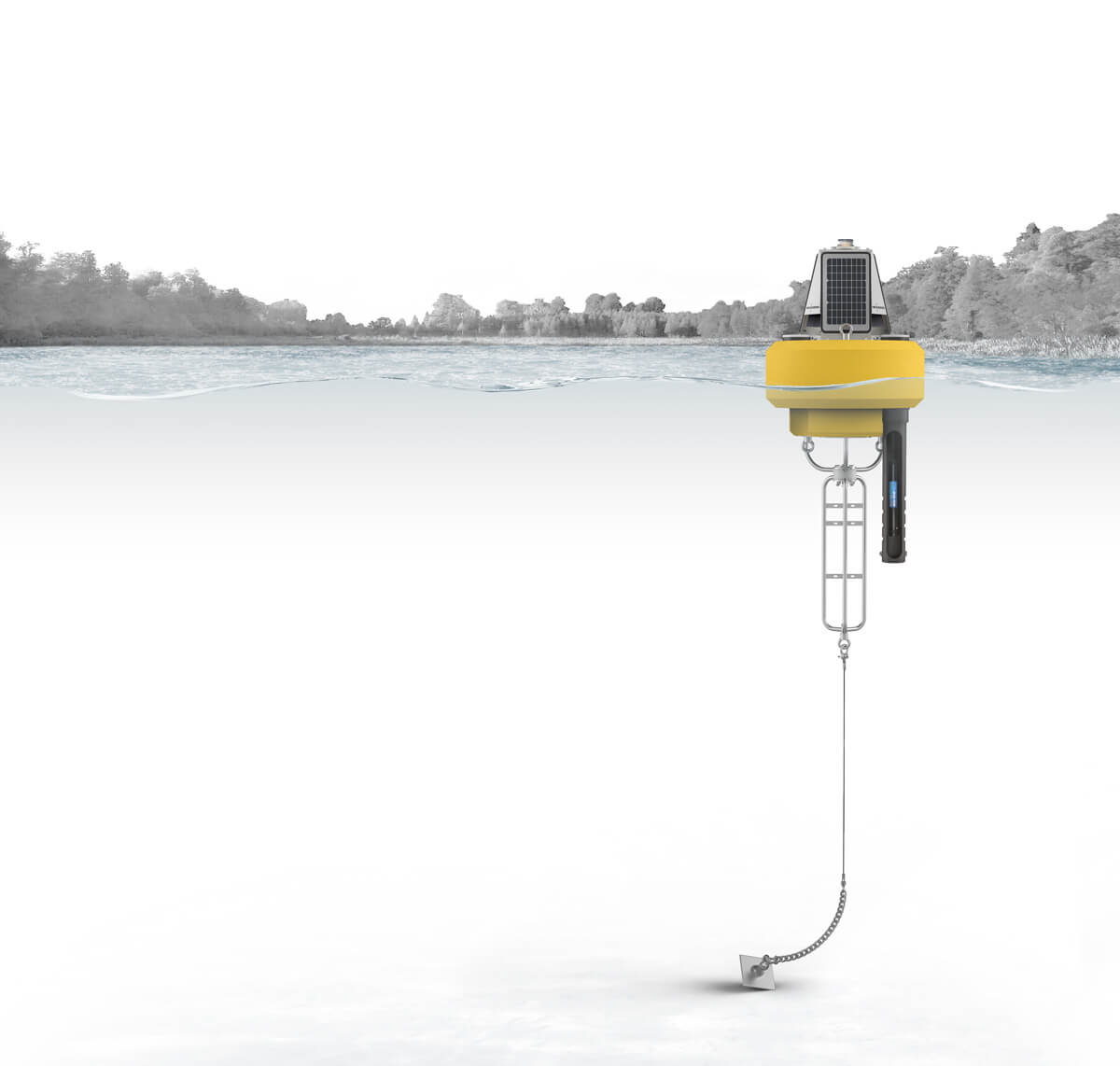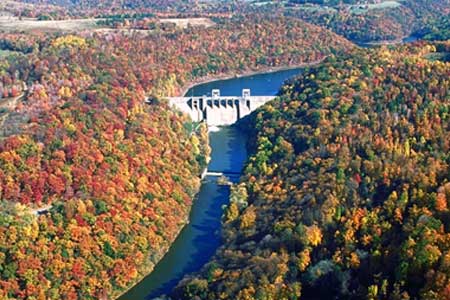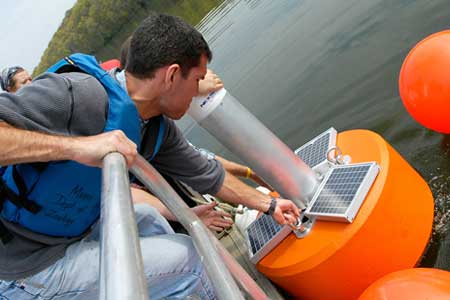Dissolved Gas Monitoring

Dissolved gases like oxygen, carbon dioxide, and methane are common in surface waters. They play important roles in aquatic ecosystems and impact atmospheric gas concentrations through air-surface flux dynamics. Real-time monitoring systems with dissolved gas sensors can detect acute changes, study long-term cycles, and gain a better understanding of the processes that affect their presence and concentrations.
Dissolved Gases in Surface Waters

Typical Dissolved Gas Monitoring System
In some cases, the dynamics of dissolved gas exchanges are well understood. For example, dissolved oxygen sensors suitable for long-term field studies have been in use for many decades. More recent advances in sensor technology now allow for more accurate monitoring of gases such as carbon dioxide (CO2) and methane (CH4), as well as total dissolved gas (TDG) concentrations. With growing concern over increasing atmospheric greenhouse gases, these sensors are useful for studies of global cycles and the role that water bodies play, amongst other applications.
Pro-Oceanus is one of the leading manufacturers worldwide for submersible dissolved gas sensors. The Solu-Blu dissolved CO2, dissolved CH4, and TDG probes provide reliable performance in applications like RAS aquaculture, wastewater emissions, groundwater studies, and gas supersaturation detection. For robust performance in long-term deployments like limnology carbon budget studies or challenging environments like coastal zone flux studies, the Mini-series dissolved CO2, dissolved CH4, and TDGP probes deliver reliability and accuracy.
A typical monitoring system interfaces one or more dissolved gas sensors with the NexSens X3 environmental data logger. Other sensor types like weather stations and water quality sondes can be added to expand the system. The standard pole-mount version of the logger is suitable for stream, dockside, or aquaculture applications. For measurement in large rivers, lakes, and coastal waters, sensors can be deployed from a platform such as the CB-450 data buoy with buoy-mounted X3 data logger.
In all cases, wireless telemetry options offer the ability to transmit real-time data to the WQData LIVE web datacenter. WQData LIVE provides remote logger controls and a suite of data management and reporting tools like automated data export, API, alarms, and more.
Contact a NexSens Applications Engineer today to discuss your dissolved gas monitoring application.

Case Studies
Educational Lake Data Buoy
The Iowa Lakeside Lab, located on West Okoboji Lake, provides science classes and research opportunities for university students as well as outreach programs through Iowa’s state universities. To supplement traditional techniques for teaching field limnology, the Lab has invested in buoy systems that continuously monitor weather, water quality and CO2 concentrations.
Read MoreMahoning Creek Hydroelectric Plant
Originally constructed from 1938-1941 for flood control in the Allegheny River basin of Western Pennsylvania, the Mahoning Creek Dam was retrofitted for hydropower production seven decades later by Enduring Hydro. Monitoring at the plant includes TDG measurements to detect potential supersaturation that could harm fish in the waters downstream from the dam.
Read MoreActon Lake Aquatic Classroom
Located just minutes away from Miami University in Oxford, Ohio, the tranquil and accessible Acton Lake is the perfect training ground for undergraduate and graduate students studying limnology. Amongst other studies, researchers are working to understand gas fluxes and carbon cycling in the water, which are influenced by factors like land use in the lake watershed.
Read More






